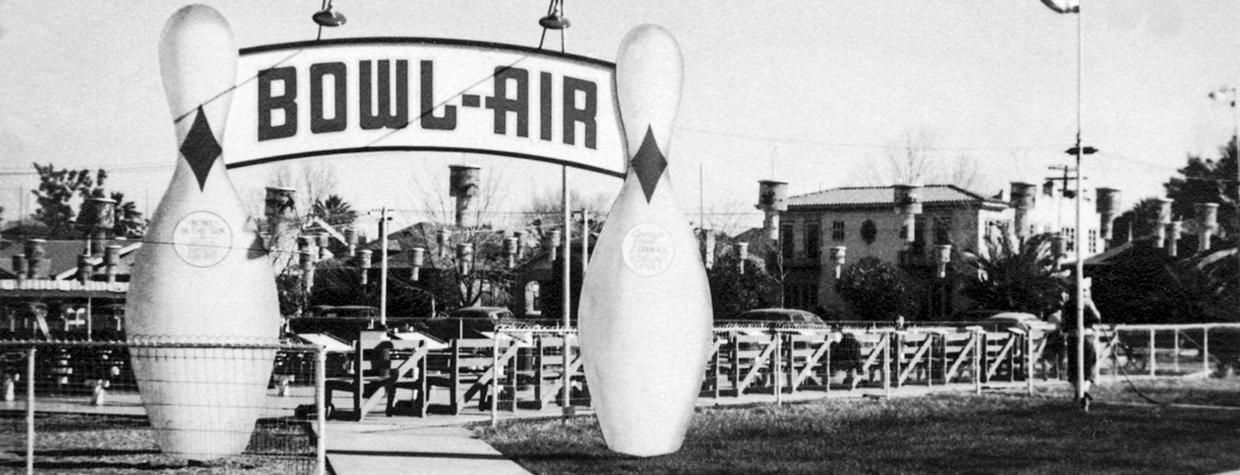Arizona's climate has made many outdoor sports popular over the state’s history. Some, such as baseball, are still popular; others, such as cricket and rugby, appeal primarily to niche audiences in the state today. But the Bowl-Air, which opened in Phoenix in 1940, was even more niche: All that’s left of this bold concept — an outdoor bowling alley — is a couple of snapshots and a newspaper advertisement.
In the days before the urban heat island warmed up our summer nights, innovations such as miniature golf found success in what then was a sleepy little Southwestern town. And although the U.S. had a long history of lawn bowling, and a few alleys had been built under open buildings at resorts in the East, the Bowl-Air appears to have been one
of the first facilities to offer open-air bowling.
The new business was at Roosevelt and First streets, and it opened with tremendous support from the businesses that had helped build it. The Arizona Sand and Rock Co. advertised that its “Hy-Strength” ready-mixed concrete had been used in the alleys, pits and sidewalks. The Salvage Sales Co. and Arizona Welding Works provided the steel and fabrication for the outdoor lighting and areas for setting the pins. L.M. Roberts provided the electrical contracting, and the Sho-Kard Shop in the Fox Theatre building created the unique metal lanterns with Western motifs that hung above the alleys to light them after dark.
The O.B. Marston Supply Co. provided the bowling balls, pins and related equipment under its partnership with the American Bowling & Billiard Corp. Marston’s congratulated the Bowl-Air “for creating a new medium of healthy, outdoor exercise for young and old alike. To bowl for fun outdoors in Arizona is to bowl for health, indeed!”
The Bowl-Air boasted 14 regulation lanes and advertised “America’s finest and most beautiful open-air bowling lanes.” The ad copy continued: “Streamline your figure! Make up a moonlight party and play under the stars … or bowl in Arizona’s Golden Sun for health, beauty and fun. Exciting. Wholesome. Stimulating. Remember, bowling keeps you fit!” Operating hours were from 8 a.m. to midnight, except Sundays, when the facility opened at 1 p.m. And the cost was comparable to indoor alleys: 15 cents a lane until 6 p.m., and 20 cents after that. But the Bowl-Air’s most memorable feature was its entrance: Two huge bowling pins, joined by the facility’s name on an arch, flanked the walkway.
Despite high hopes and apparently strong local support, the biggest splash the Bowl-Air made was an advertisement in The Arizona Republic for its opening on December 8, 1940. Perhaps the idea was before its time, or maybe an uncertain future in the years before the U.S. entered World War II was to blame. Regardless, the Bowl-Air was not successful and soon closed.
Sadly, like most other interesting buildings and vernacular roadside architecture from that era of Phoenix’s history, nothing remains — the site was soon redeveloped, the business forgotten. And given the recent growth of Roosevelt Row, one can only imagine how the Bowl-Air might fare today.

